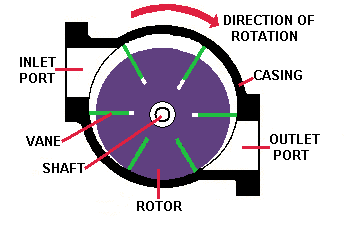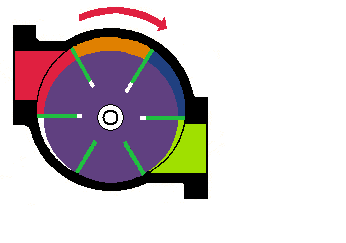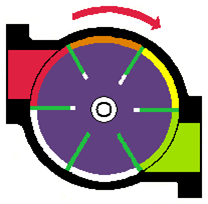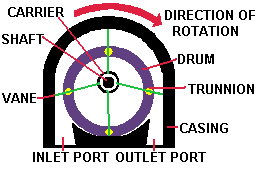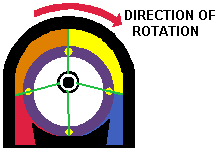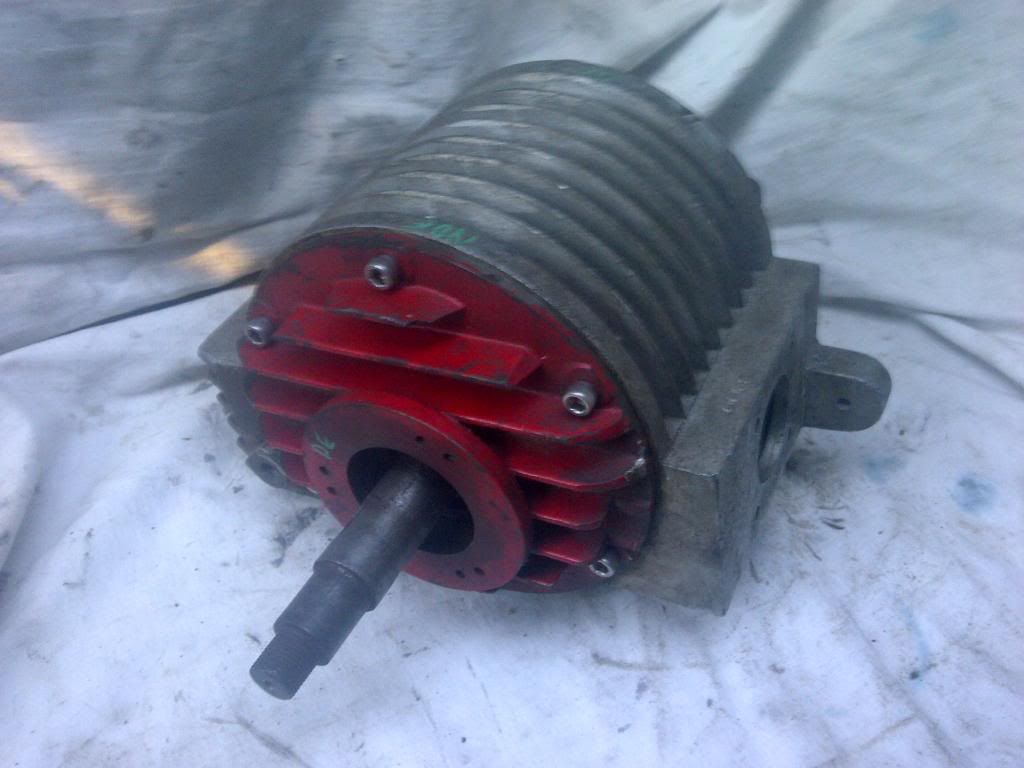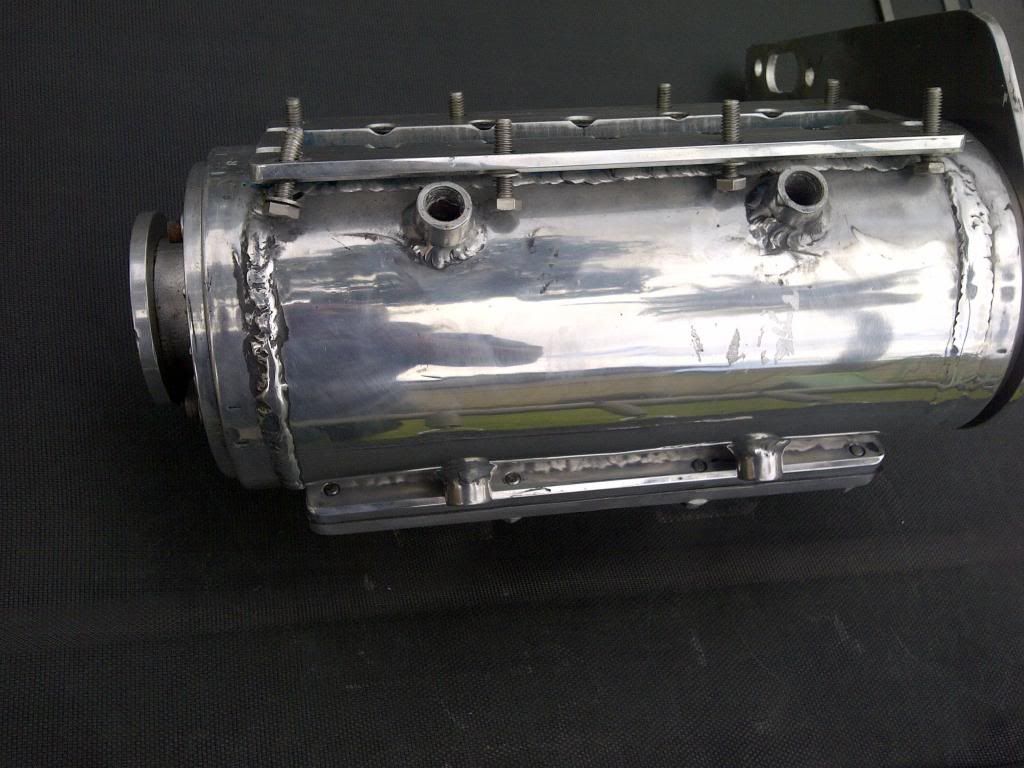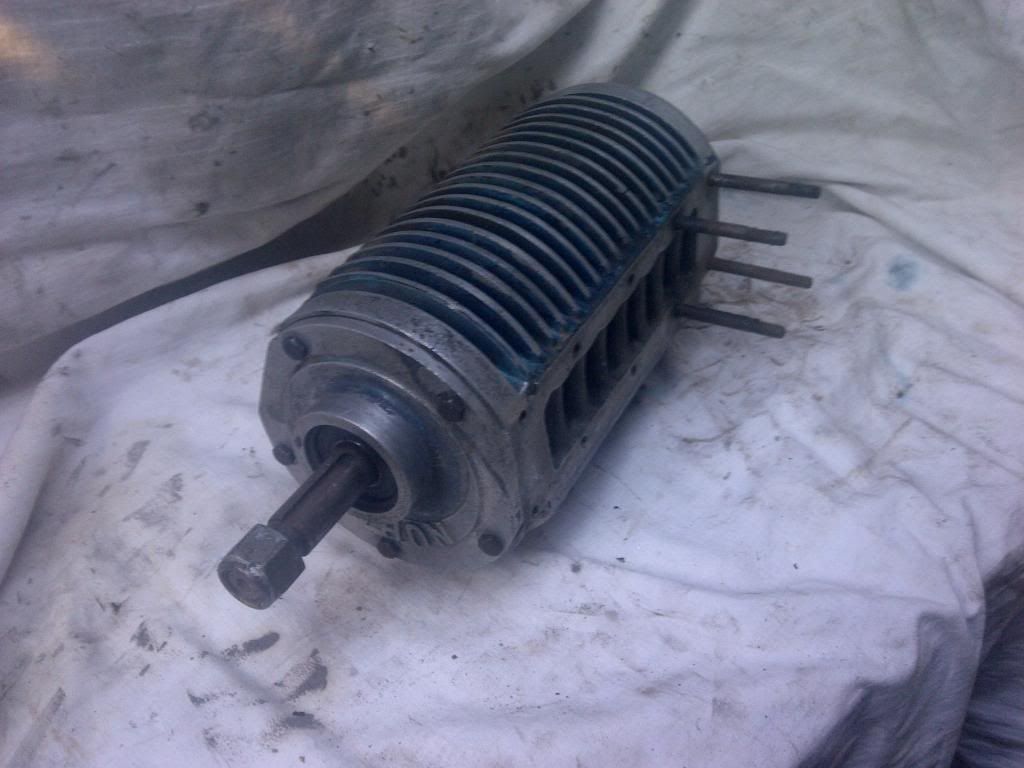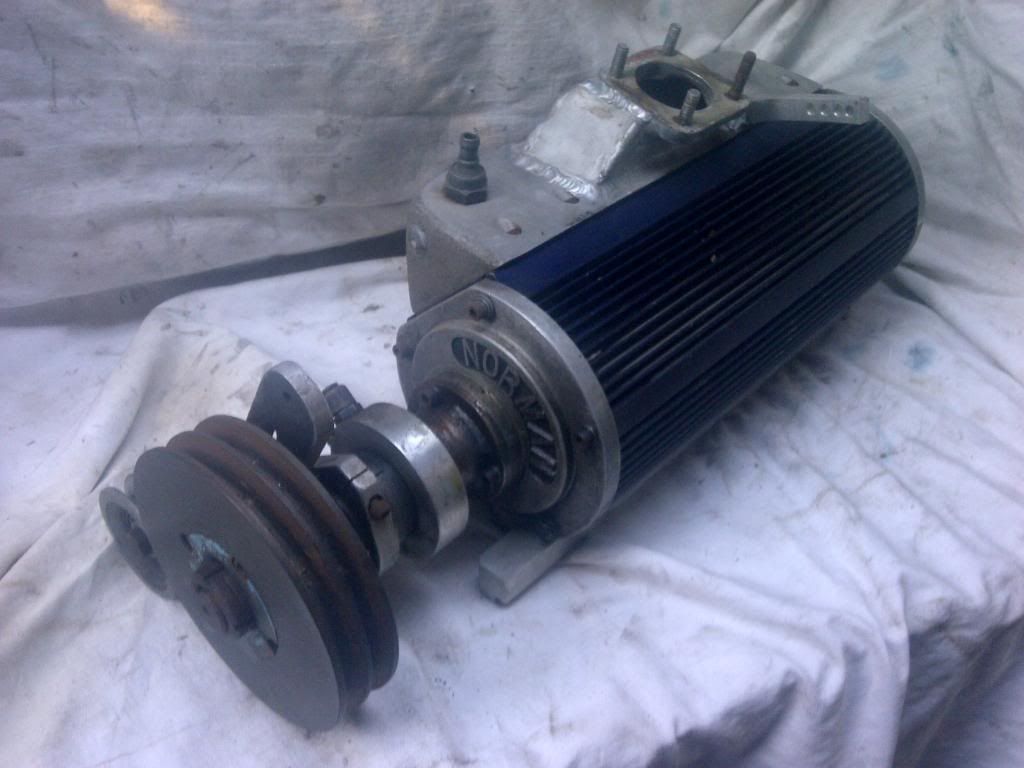Harv's Norman supercharger thread
Posted: Tue Jun 25, 2013 10:12 am
Ladies and Gentlemen,
As promised, here is a start to the Norman supercharger thread.
Having finished the grey motor crashbox guide, it's time to start a new project. My intention this time is to write a Guide for Norman superchargers. What worries me a little is that Norman superchargers are very thin on the ground. Whilst I was able to lay my hands on quite a few carbs, gearboxes and heaters to play with and compare, the chances of doing so with a Norman are pretty slim. It also takes quite a bit of time to write a Guide, and the info must seem to "fall into a black hole" in the interim. To address these concerns, I'm going to write the Norman Guide by publishing dribs and drabs on a single forum thread (one near-identical thread each on the FB/EK, EJ/EH, FE/FC and FX/FJ forums). This means that you get the info earlier, and offers an opportunity for people to comment/add info as we go along (instead of me reverse-engineering by pulling apart several examples). Some weeks there will be an update, some weeks not... depends on how busy I get. I'm also hoping that by publishing dribs and drabs that it will encourage people to bring forth some info to help complete the picture. Once the info is complete, I'll pull it all together and pdf it as a Guide.
The Guide that will come from this thread aims to provide some information regarding fitment of Norman superchargers to early Holdens, and primarily FB/EK Holdens. It will contain:
• some of the theory behind sliding vane superchargers,
• historical information on the production and use of Norman superchargers,
• practical information on the identification, disassembly and reassembly of Norman superchargers, and
• guidance on tuning, replacement parts and overhaul techniques.
(... and yes Alan, I will talk a bit about Judsons
 ).
).
The Guide does not aim to be a detailed textbook on all topics of supercharging, nor does it present the basics of how supercharging works. For information of this nature, I’d strongly recommend the following books:
• “Supercharge!” by Eldred Norman, 1968
• "Supercharged! Design, Testing and Installation of Supercharger Systems" by Corky Bell, 2001
• "Supercharging Performance Handbook" by Jeff Hartmann, 2011 or
• “Turbochargers” by Hugh MacInnes, 1984.
Whilst the Norman supercharger will greatly increase the performance of a Holden grey motor, it will not deliver the neck-snapping, tyre frying, 9-second quarter mile performance that many people associate with supercharged engines. Like most grey motor performance equipment, Norman superchargers can be likened to “going faster… slowly”. I will assume in the discussion below that the reader is interested in historic speed equipment that is period correct (i.e. that the basic equipment could have been purchased in the 50’s-60’s) yet operable (i.e. that some concessions will be made to allow the supercharger to function with modern fuels, registration laws and with materials that are currently available). I will also assume that the reader has been able to get hold of a Norman supercharger, but is missing some or all of the ancillaries (manifold, carburetor, water injection, overhaul parts) required to get it running.
Whilst the Guide will use FB/EK Holdens as an example, much of the information is applicable to other early Holdens. Please bear in mind that the Norman supercharger was not an original fitment to early Holdens, and hence that limited documentation is known to exist. Much of the information below is drawn from internet forums, discussion with enthusiasts and common sense. I will use photos and other information from a wide variety of sources, particularly from the forums – if anyone is offended by my use of the material, feels I have breached copyright or needs recognition, please let me know and I will correct the issue immediately. Equally, I will make opinions and draw conclusions on some of the information I have found and equipment I have owned, and have cross-referenced some material - if anyone believes that I have made an error (or knows a better way to do something), please let me know and I will update the document... after all, the main purpose here is to help other early Holden enthusiasts.
Like all things automotive, installing, operating and maintaining a Norman supercharger comes with a risk. Leaking fuel lines can lead to fires, jammed throttles can lead to out-of-control vehicles and items dropped down a carburetor throat can cause massive engine damage (amongst other hazards). Any advice contained in this document is to be taken at the reader’s risk – qualified mechanics should be consulted where appropriate.
As a start for this post, lets take a quick look at supercharger theory, and specifically where the Norman fits in. “Supercharger” is a collective term for a large variety of equipment, each with the same practical purpose: to jam as much air as practicable into an engine, along with more fuel, to make more power. When the word supercharger is used, the most common image that comes to mind is a polished GM 6/71 Rootes blower sitting on top of a Chev V8, with an injection bug catcher sitting on top. However, superchargers are a lot more diverse, and can be taken to include:
• turbochargers,
• nitrous oxide (often referred to as “chemical supercharging”, and
• tuned inlet runners (“ram air”).
In general, a supercharger can be considered to be a mechanical machine that compresses air (and sometimes fuel) that is driven by the engine. A turbocharger is the same type of device, but driven by exhaust gas pressure.
If we put chemical supercharging aside, superchargers are of two basic types:
a) Positive displacement: in this type the supercharger sucks in a set volume (or packet) of air, and then forces out the same packet of air. This is similar to the way that a piston engine works (valves open, suck in a set volume of air and fuel, close the valves, compress and power, then open the valves to let the gas out). These types of supercharger have a displacement, or volume or air that is sucked in for every revolution of the supercharger drive shaft.
b) Dynamic: in this type of supercharger the amount of air sucked in is dependant on the speed of the drive shaft, with some churn or slippage inside the supercharger casing (i.e. a packet of air might be sucked in, then some of the packet recirculated a bit before being pushed out again). This is similar to the way that a grey motor water pump works. These types of supercharger do not have a displacement, but instead are described by a compressor “map” (a fancy drawing that shows pressure and flow changing with supercharger speed, similar to the pump curves used in heavy industry).
Superchargers are also defined by whether they have an internal compression ratio or not. An internal compression ratio means that the air is compressed inside the supercharger before leaving the machine. Superchargers that do not have an internal compression ratio do not compress the air inside the casing. Rather, they suck air in and push it out, with the compression being done by “mooshing” the air up inside the cylinder head (more on this later). Sometimes the term “blower” is used to distinguish superchargers that do not have an internal compression ratio (as they just “blow” the air through without compressing it). However, this should not be relied on, as “blower” has become synonymous with most types of supercharger (similar to the way that the terms “huffer”, “snail”, “compressor”, “charger” and “turbo” are bandied about).
Examples of both positive displacement and dynamic superchargers are shown in the diagram below. Note that I have also added chemical superchargers (nitrous and nitro) to the chart.
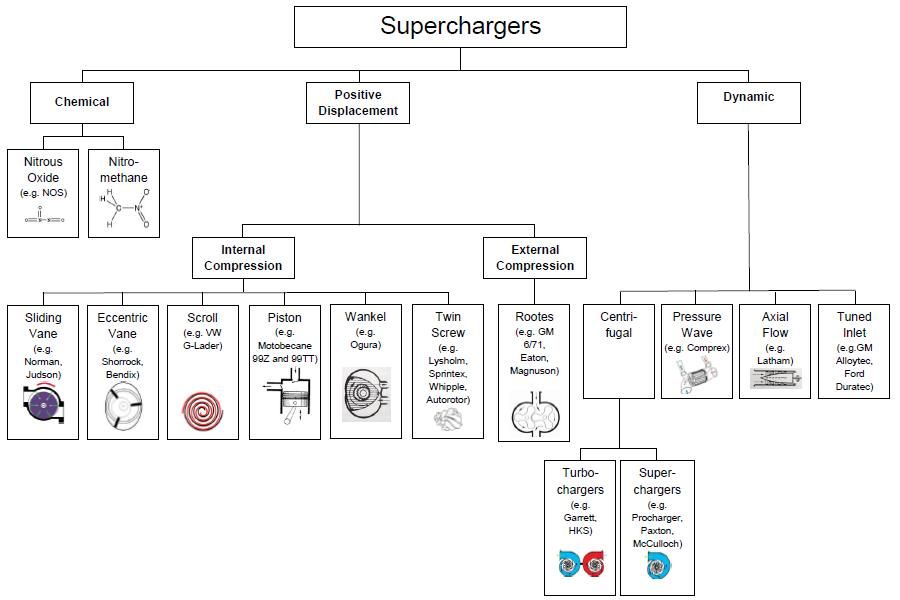
Note that the Norman supercharger is a positive displacement machine, and that it has an internal compression ratio.
Enough for a first post - happy to hear commetns and input please.
Cheers,
Harv (deputy apprentice Norman fiddler).
As promised, here is a start to the Norman supercharger thread.
Having finished the grey motor crashbox guide, it's time to start a new project. My intention this time is to write a Guide for Norman superchargers. What worries me a little is that Norman superchargers are very thin on the ground. Whilst I was able to lay my hands on quite a few carbs, gearboxes and heaters to play with and compare, the chances of doing so with a Norman are pretty slim. It also takes quite a bit of time to write a Guide, and the info must seem to "fall into a black hole" in the interim. To address these concerns, I'm going to write the Norman Guide by publishing dribs and drabs on a single forum thread (one near-identical thread each on the FB/EK, EJ/EH, FE/FC and FX/FJ forums). This means that you get the info earlier, and offers an opportunity for people to comment/add info as we go along (instead of me reverse-engineering by pulling apart several examples). Some weeks there will be an update, some weeks not... depends on how busy I get. I'm also hoping that by publishing dribs and drabs that it will encourage people to bring forth some info to help complete the picture. Once the info is complete, I'll pull it all together and pdf it as a Guide.
The Guide that will come from this thread aims to provide some information regarding fitment of Norman superchargers to early Holdens, and primarily FB/EK Holdens. It will contain:
• some of the theory behind sliding vane superchargers,
• historical information on the production and use of Norman superchargers,
• practical information on the identification, disassembly and reassembly of Norman superchargers, and
• guidance on tuning, replacement parts and overhaul techniques.
(... and yes Alan, I will talk a bit about Judsons
The Guide does not aim to be a detailed textbook on all topics of supercharging, nor does it present the basics of how supercharging works. For information of this nature, I’d strongly recommend the following books:
• “Supercharge!” by Eldred Norman, 1968
• "Supercharged! Design, Testing and Installation of Supercharger Systems" by Corky Bell, 2001
• "Supercharging Performance Handbook" by Jeff Hartmann, 2011 or
• “Turbochargers” by Hugh MacInnes, 1984.
Whilst the Norman supercharger will greatly increase the performance of a Holden grey motor, it will not deliver the neck-snapping, tyre frying, 9-second quarter mile performance that many people associate with supercharged engines. Like most grey motor performance equipment, Norman superchargers can be likened to “going faster… slowly”. I will assume in the discussion below that the reader is interested in historic speed equipment that is period correct (i.e. that the basic equipment could have been purchased in the 50’s-60’s) yet operable (i.e. that some concessions will be made to allow the supercharger to function with modern fuels, registration laws and with materials that are currently available). I will also assume that the reader has been able to get hold of a Norman supercharger, but is missing some or all of the ancillaries (manifold, carburetor, water injection, overhaul parts) required to get it running.
Whilst the Guide will use FB/EK Holdens as an example, much of the information is applicable to other early Holdens. Please bear in mind that the Norman supercharger was not an original fitment to early Holdens, and hence that limited documentation is known to exist. Much of the information below is drawn from internet forums, discussion with enthusiasts and common sense. I will use photos and other information from a wide variety of sources, particularly from the forums – if anyone is offended by my use of the material, feels I have breached copyright or needs recognition, please let me know and I will correct the issue immediately. Equally, I will make opinions and draw conclusions on some of the information I have found and equipment I have owned, and have cross-referenced some material - if anyone believes that I have made an error (or knows a better way to do something), please let me know and I will update the document... after all, the main purpose here is to help other early Holden enthusiasts.
Like all things automotive, installing, operating and maintaining a Norman supercharger comes with a risk. Leaking fuel lines can lead to fires, jammed throttles can lead to out-of-control vehicles and items dropped down a carburetor throat can cause massive engine damage (amongst other hazards). Any advice contained in this document is to be taken at the reader’s risk – qualified mechanics should be consulted where appropriate.
As a start for this post, lets take a quick look at supercharger theory, and specifically where the Norman fits in. “Supercharger” is a collective term for a large variety of equipment, each with the same practical purpose: to jam as much air as practicable into an engine, along with more fuel, to make more power. When the word supercharger is used, the most common image that comes to mind is a polished GM 6/71 Rootes blower sitting on top of a Chev V8, with an injection bug catcher sitting on top. However, superchargers are a lot more diverse, and can be taken to include:
• turbochargers,
• nitrous oxide (often referred to as “chemical supercharging”, and
• tuned inlet runners (“ram air”).
In general, a supercharger can be considered to be a mechanical machine that compresses air (and sometimes fuel) that is driven by the engine. A turbocharger is the same type of device, but driven by exhaust gas pressure.
If we put chemical supercharging aside, superchargers are of two basic types:
a) Positive displacement: in this type the supercharger sucks in a set volume (or packet) of air, and then forces out the same packet of air. This is similar to the way that a piston engine works (valves open, suck in a set volume of air and fuel, close the valves, compress and power, then open the valves to let the gas out). These types of supercharger have a displacement, or volume or air that is sucked in for every revolution of the supercharger drive shaft.
b) Dynamic: in this type of supercharger the amount of air sucked in is dependant on the speed of the drive shaft, with some churn or slippage inside the supercharger casing (i.e. a packet of air might be sucked in, then some of the packet recirculated a bit before being pushed out again). This is similar to the way that a grey motor water pump works. These types of supercharger do not have a displacement, but instead are described by a compressor “map” (a fancy drawing that shows pressure and flow changing with supercharger speed, similar to the pump curves used in heavy industry).
Superchargers are also defined by whether they have an internal compression ratio or not. An internal compression ratio means that the air is compressed inside the supercharger before leaving the machine. Superchargers that do not have an internal compression ratio do not compress the air inside the casing. Rather, they suck air in and push it out, with the compression being done by “mooshing” the air up inside the cylinder head (more on this later). Sometimes the term “blower” is used to distinguish superchargers that do not have an internal compression ratio (as they just “blow” the air through without compressing it). However, this should not be relied on, as “blower” has become synonymous with most types of supercharger (similar to the way that the terms “huffer”, “snail”, “compressor”, “charger” and “turbo” are bandied about).
Examples of both positive displacement and dynamic superchargers are shown in the diagram below. Note that I have also added chemical superchargers (nitrous and nitro) to the chart.

Note that the Norman supercharger is a positive displacement machine, and that it has an internal compression ratio.
Enough for a first post - happy to hear commetns and input please.
Cheers,
Harv (deputy apprentice Norman fiddler).
